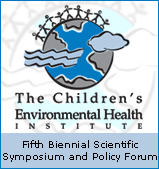 |
|  |
Innovations
|
 Drugs from Dinoflagellates
Drugs from Dinoflagellates Mike May Abstract
To fight both established and emerging diseases, scientists search continually for new pharmaceuticals. Many new drugs may soon come from compounds produced by marine animals and plants, and the great diversity of marine organisms could potentially lead to an equally diverse array of drugs. In fact, thousands of compounds have been isolated from marine organisms in the past two decades, although such organisms can be rare and inaccessible, or available in such minute quantities, that scientists cannot collect and test the compounds. But Yuzuru Shimizu, a natural-products chemist at the University of Rhode Island in Kingston, has found a way to farm these organisms through large-scale aquaculture so that pharmaceutical companies can harvest as much of a compound as needed. Since 1970, Shimizu has studied the pharmaceutical possibilities of various sea-dwelling organisms. After two years spent painstakingly gathering tiny quantities of compounds such as the powerful cytotoxins amphidinolide B and carbenolide-I, both produced by the dinoflagellate Amphidinium, he realized the necessity for culturing such organisms on a larger scale. With the help of colleagues, Shimizu has devised a method combining large-scale culturing with several types of chromatography to isolate pure compound, allowing much-needed research to be done on these valuable aquatic resources.
The full version of this article is available for free in HTML format. |
|
|
 |
|

